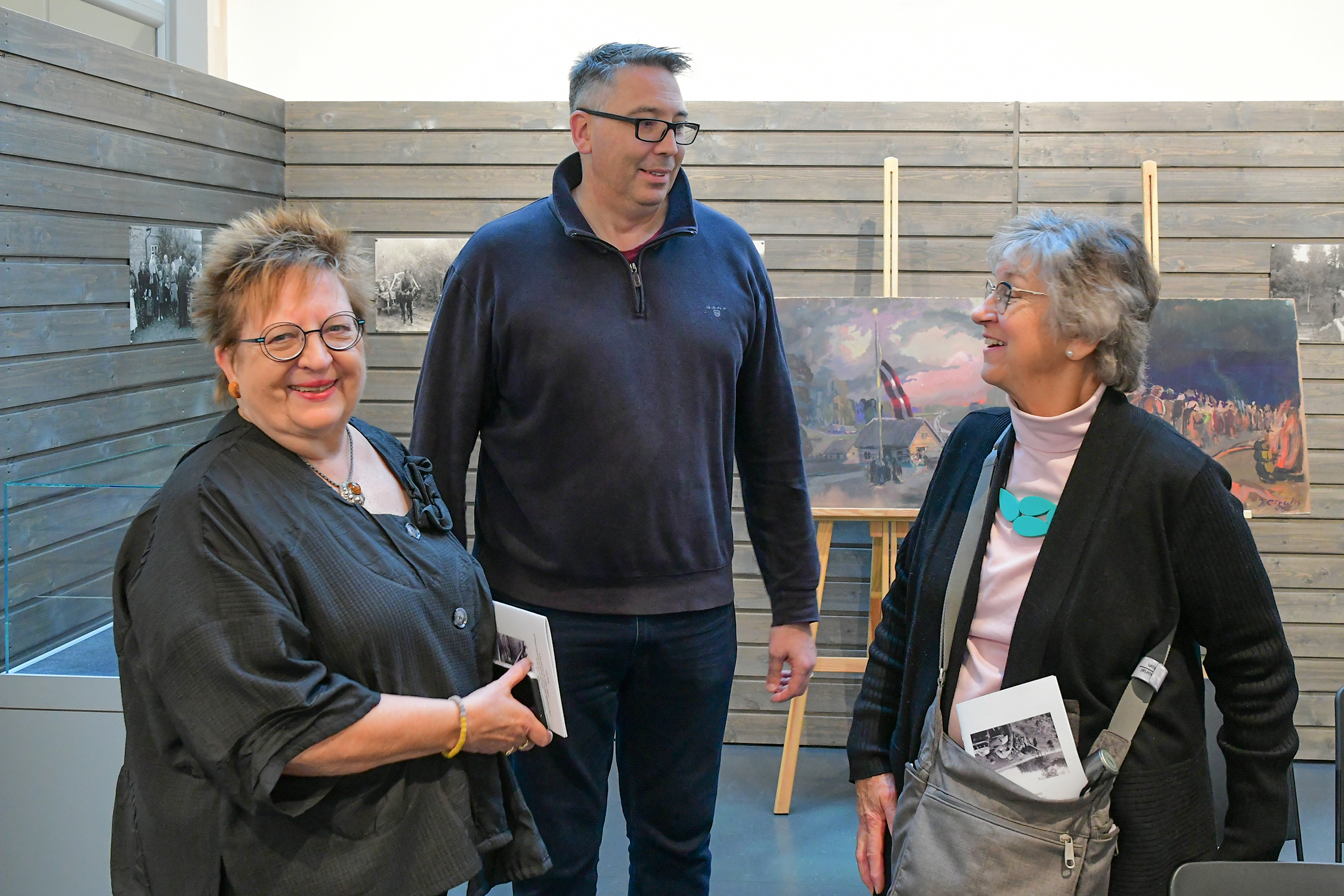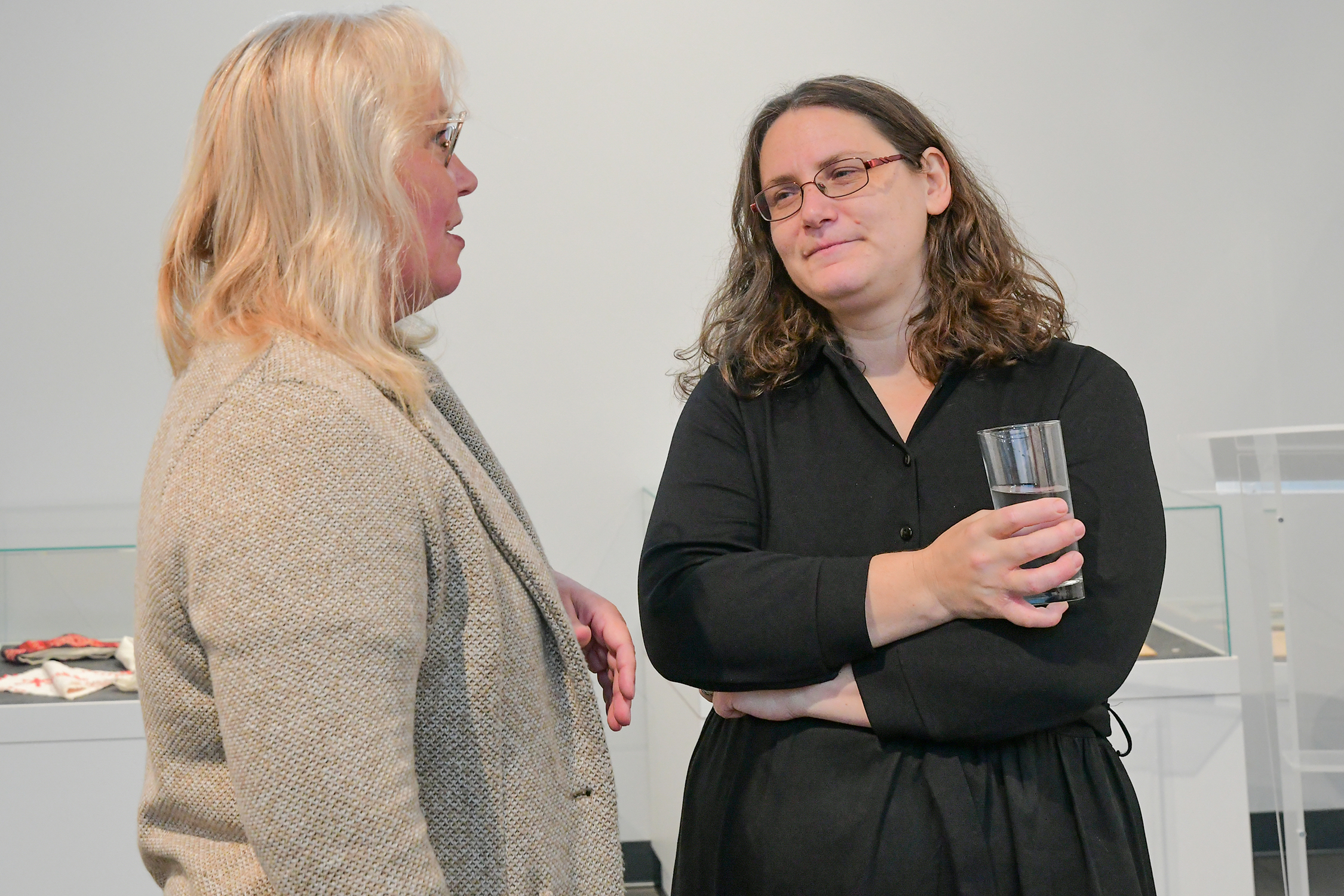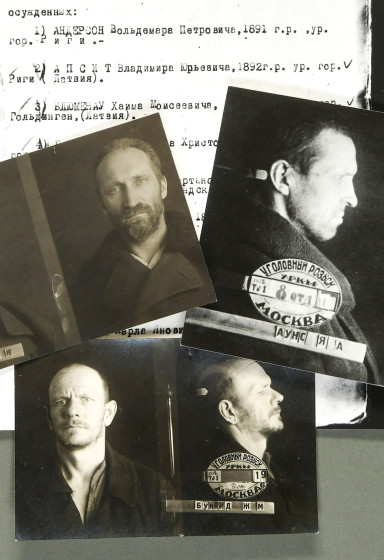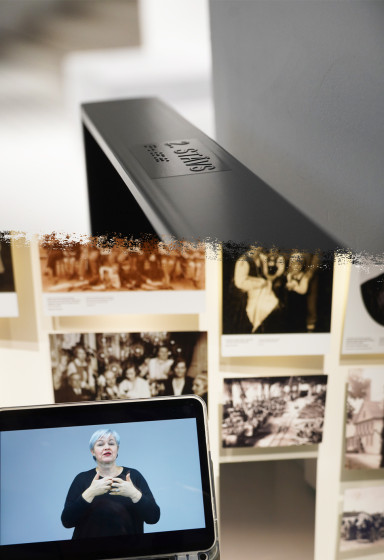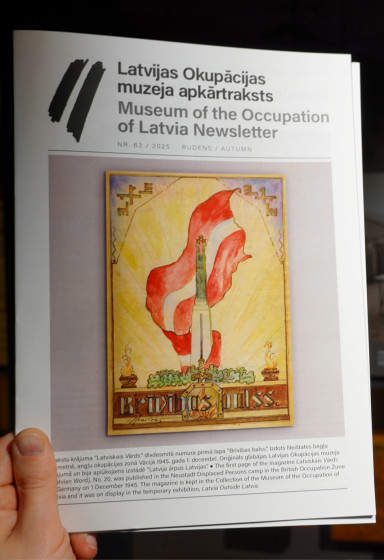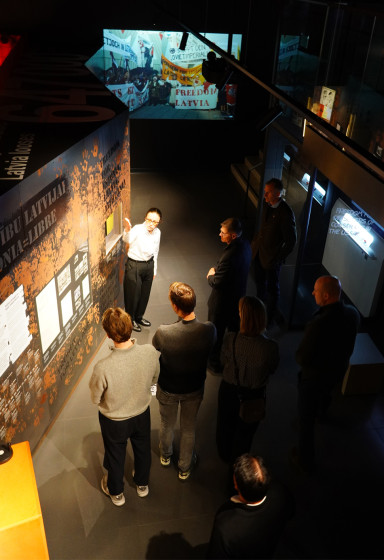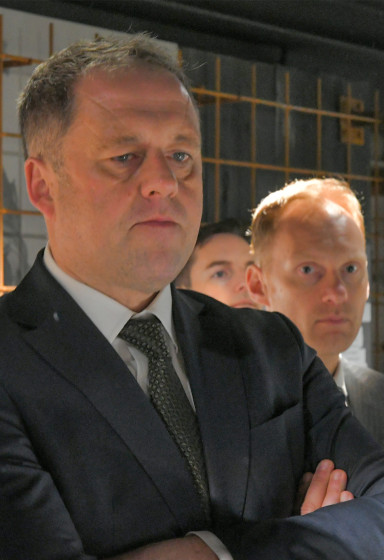Donate to Museum
Each donation helps to ensure the Museum's activities, allowing it to function and provide information for people from all over the world.
The Museum is grateful to each donor and invites everyone to contribute.
Looking back at the event "Escape from the Baltics - 80"
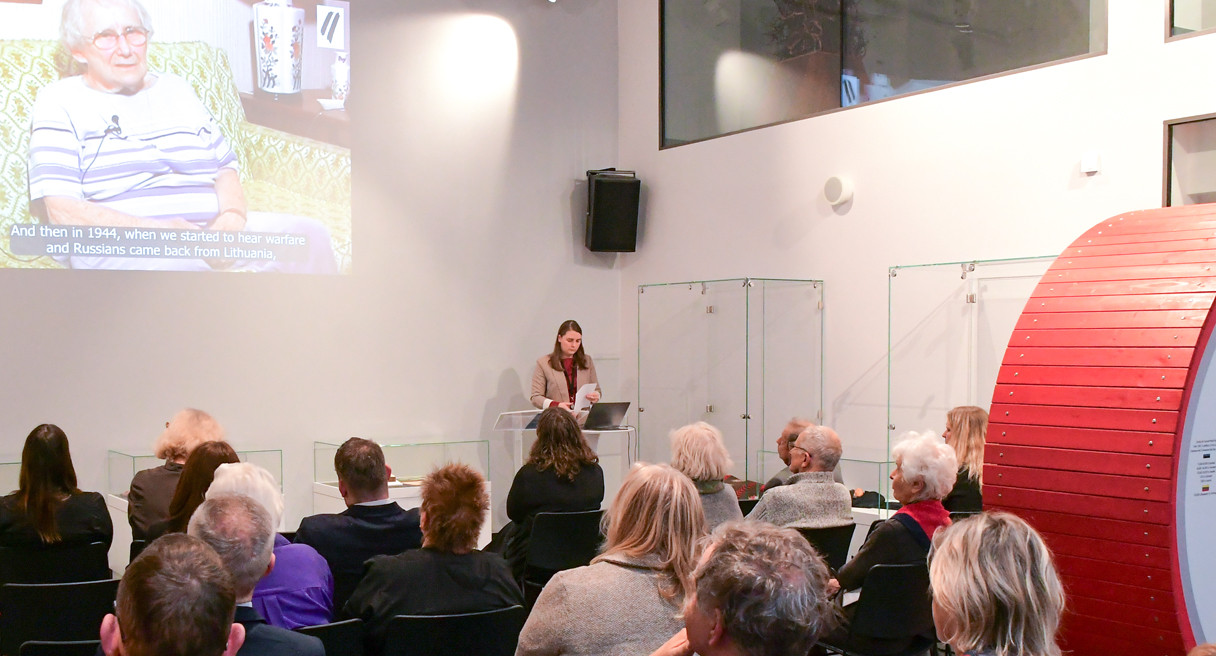
On 1 November, the event Escape from the Baltics - Women and children's experiences of leaving Latvia 80 years ago took place in our museum’s temporary exhibition hall. This followed the opening of the exhibition On the Highways and Across the Sea” Second World War. The Inhabitants of Latvia Leave their Homeland. 1944-1945. The event focused on the testimonies of refugees in the museum's Audiovisual Materials Collection and the National Oral History Collection, paying special attention to the experiences of women and children leaving their homes in Latvia and then ending up in Germany or Sweden.
Evita Feldentāle, Head of the Museum Audiovisual Collection, first introduced the Museum's collection of video testimonies, highlighting those by refugees, pointing out that of the 2530 life stories currently filmed, 314 are of refugees, while the topic itself is touched upon in many other life stories. She continued by presenting video examples, allowing the audience to hear stories about what people took with them when they left, how emotional it was to say goodbye to home and then to Latvia, and also described the conditions on the way to ports or train stations, such as Liepāja, where they left their homeland for many years.
Next, Maija Krūmiņa, PhD, senior researcher at the Institute of Philosophy and Sociology of the Faculty of Humanities of the University of Latvia, presented the life stories of refugees from the National Oral History Collection. Before focusing more in-depth on the experiences of women and children, Krūmiņa described the National Oral History Collection and the refugee life stories it contains, and explained the features that distinguish women's and men's memories, drawing attention to the nuances that stand out in women's life stories, where the focus is more on the conditions of the places themselves. In the stories from refugee experiences as children, episodes predominate which left a lasting impression on their later memories, such as this passage: "We took a boat from Riga to Königsberg. [...] We were on the same ship, and our luggage was also on our ship, but some of the luggage was on the other ship. And the other ship was torpedoed to the bottom. There was my teddy bear. [...] I tell you, I completely felt as if my own child had died." Here the toy played the main "role", not the circumstances under which the dangerous journey to Königsberg had to be made.
The experiences of children and adolescents in the difficult and chaotic circumstances of the refugee journey bridged the gap between generations, as they, despite their young age, had to take responsibility and take part not just in transporting belongings, but also in taking care of, for example, the horses that people needed to move them and their possessions. It was not just the war, but also the refugee journey experiences that compelled children and adolescents to grow up faster. As Ingrīda Stravinska acknowledged in her video testimony: "[...] I was, what, 14 years old at the time, I already had the same responsibilities as a grown-up. I had my own cart, I had my own horse, I had to take care of feeding it and all kinds of things. In other words, something I could call my youth - I didn't have that. One day I'm a child, the next day I have to be an adult, because there was no choice but to become an adult, step by step."
To learn more about the mass refugee movement that began 80 years ago, please visit the exhibition On the Highways and Across the Sea” Second World War. The Inhabitants of Latvia Leave their Homeland. 1944-1945, on display in the museum's temporary exhibition hall and in the outdoor space at the museum entrance.
The event was organized in the framework of the European Traumatic Memory - women refugees during the 1944 Baltic Escape project.
Co-funded by the European Union.
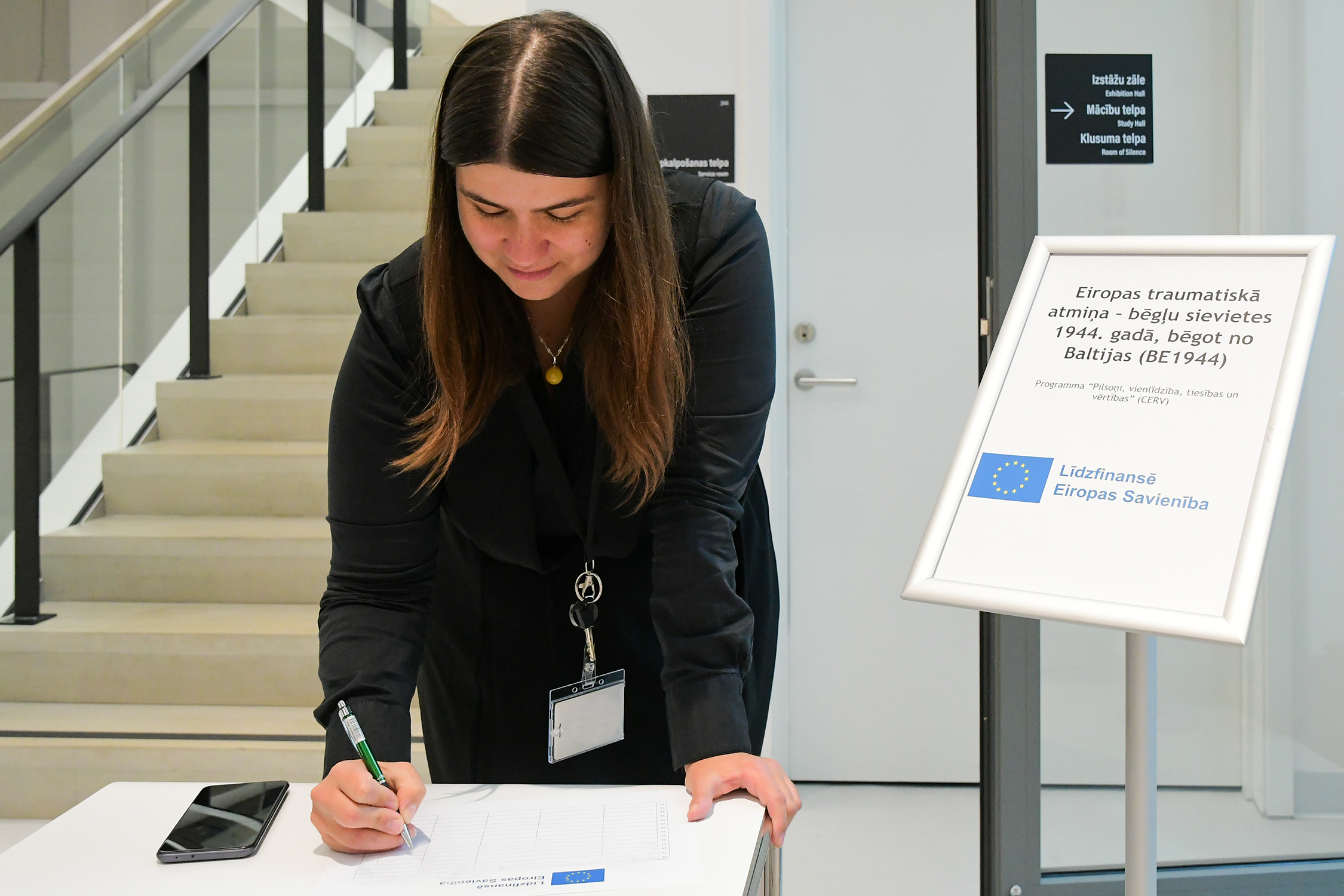
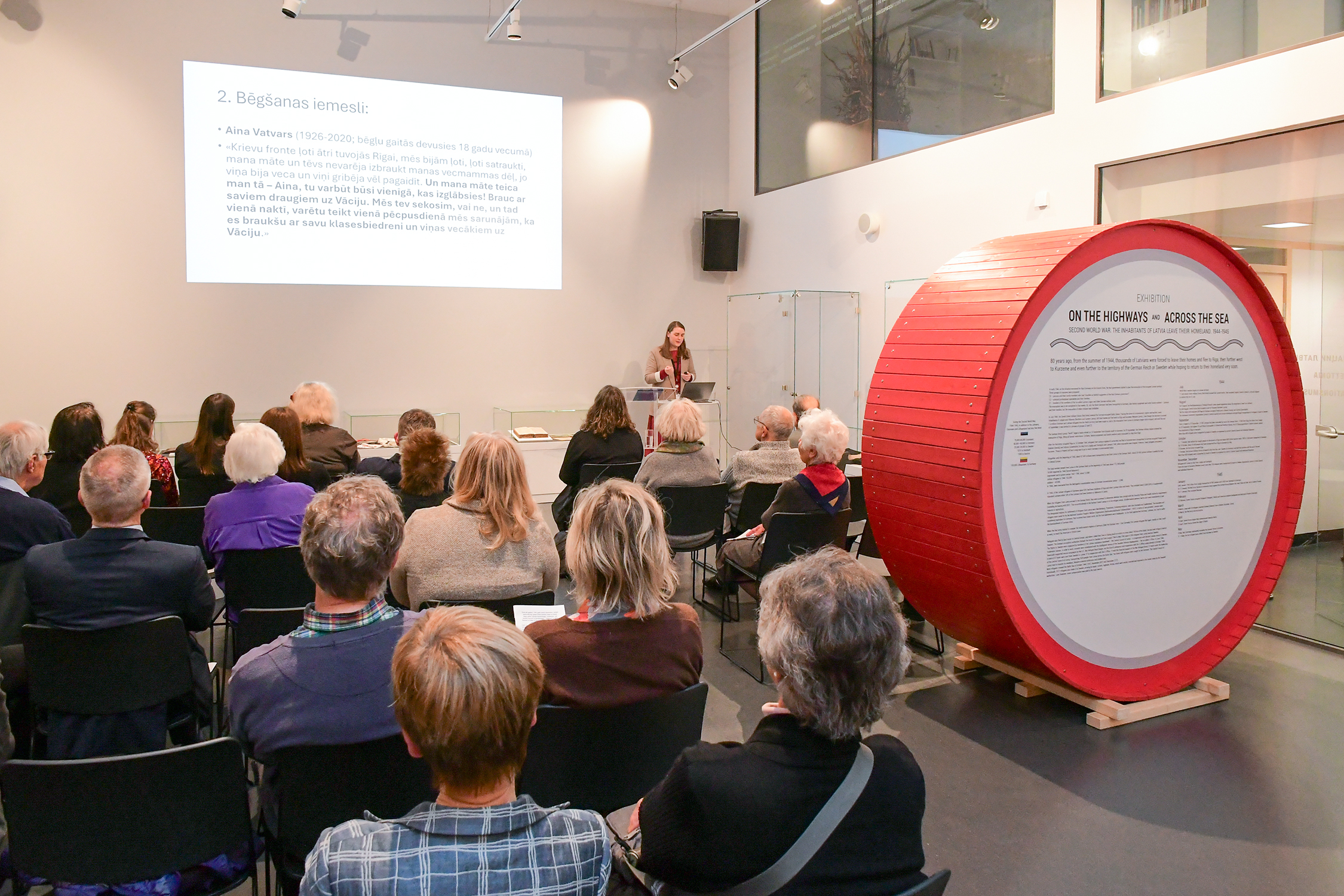
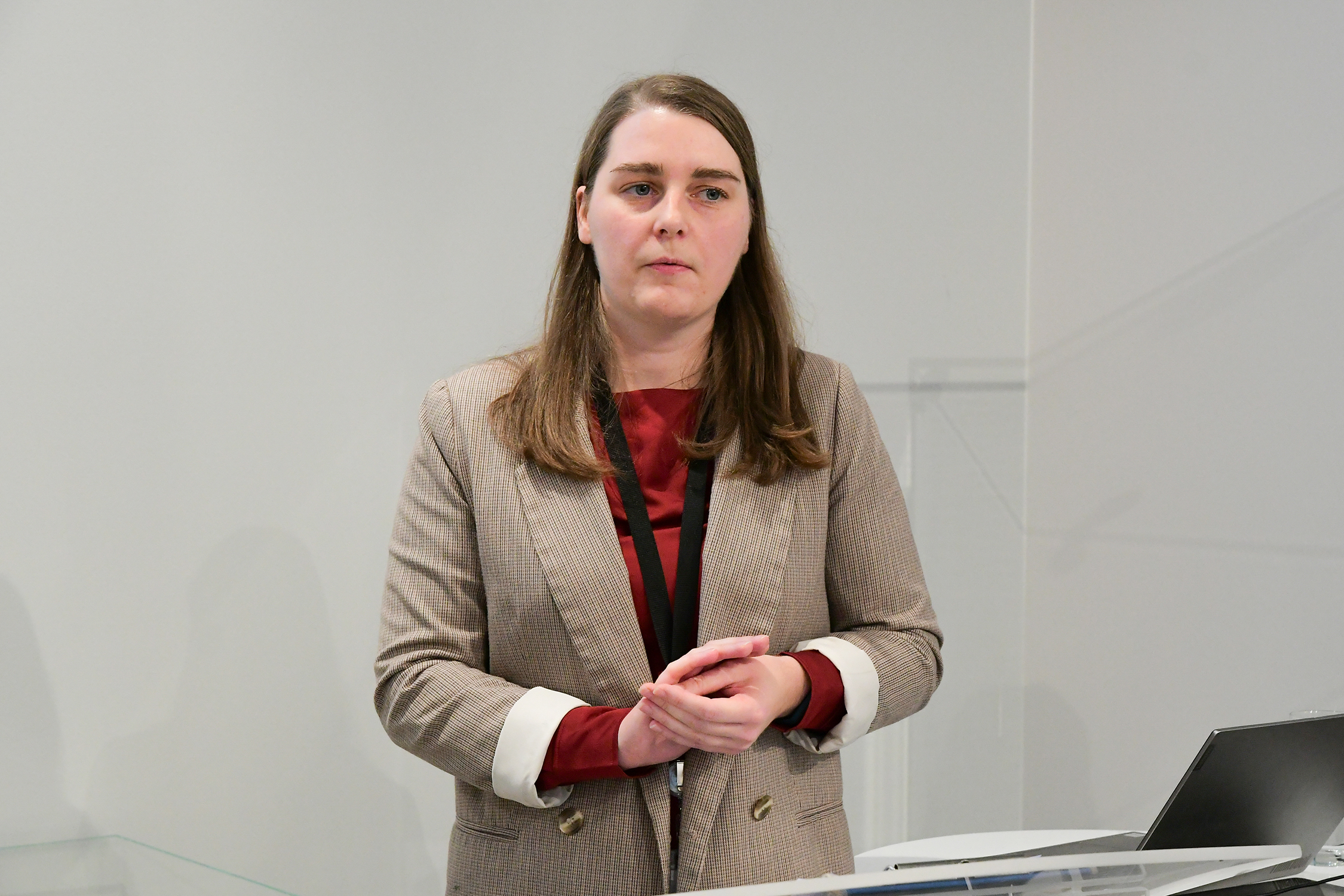
Evita Feldentāle, Head of the Museum Audiovisual Collection, introduced the Museum's collection of video testimonies.
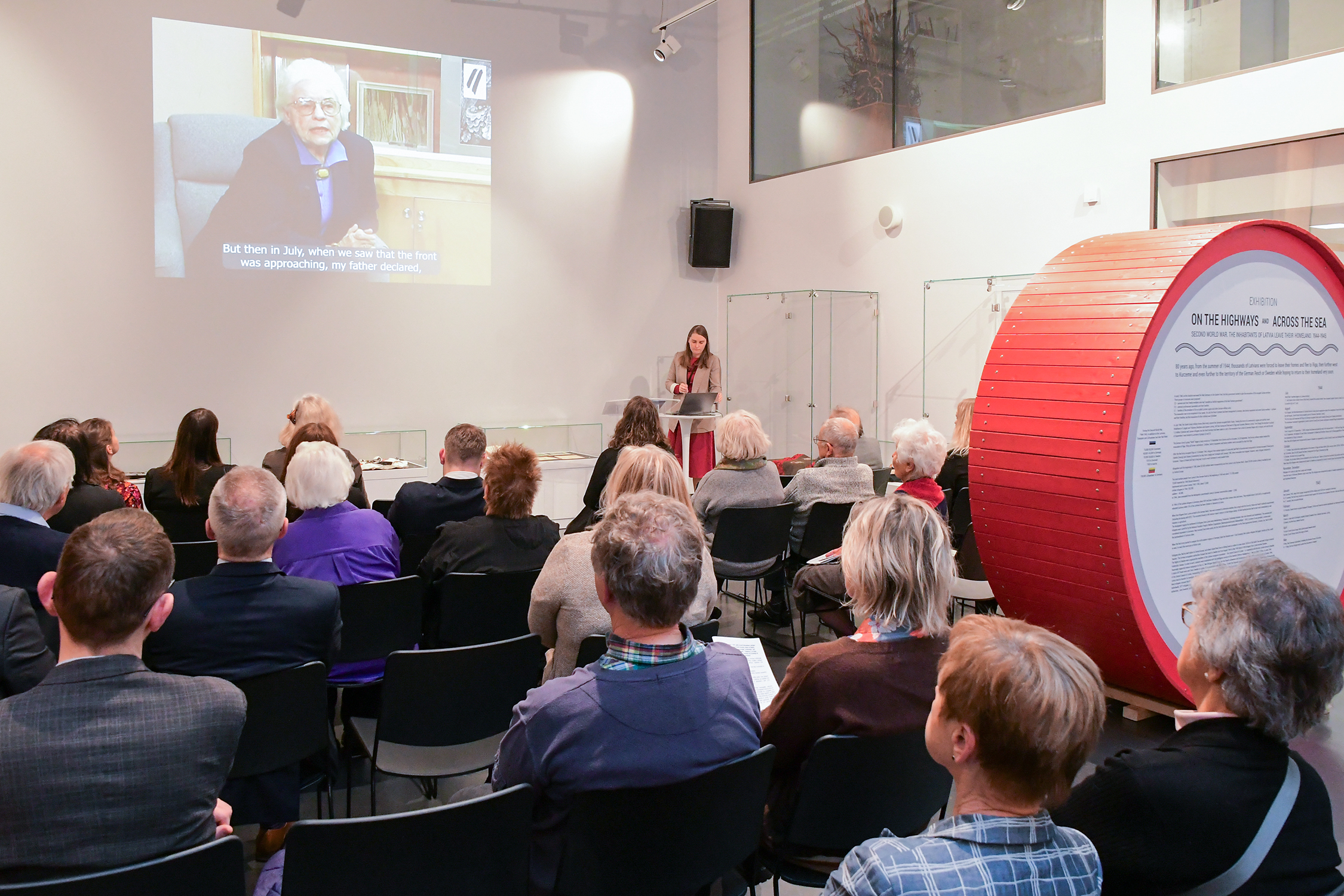

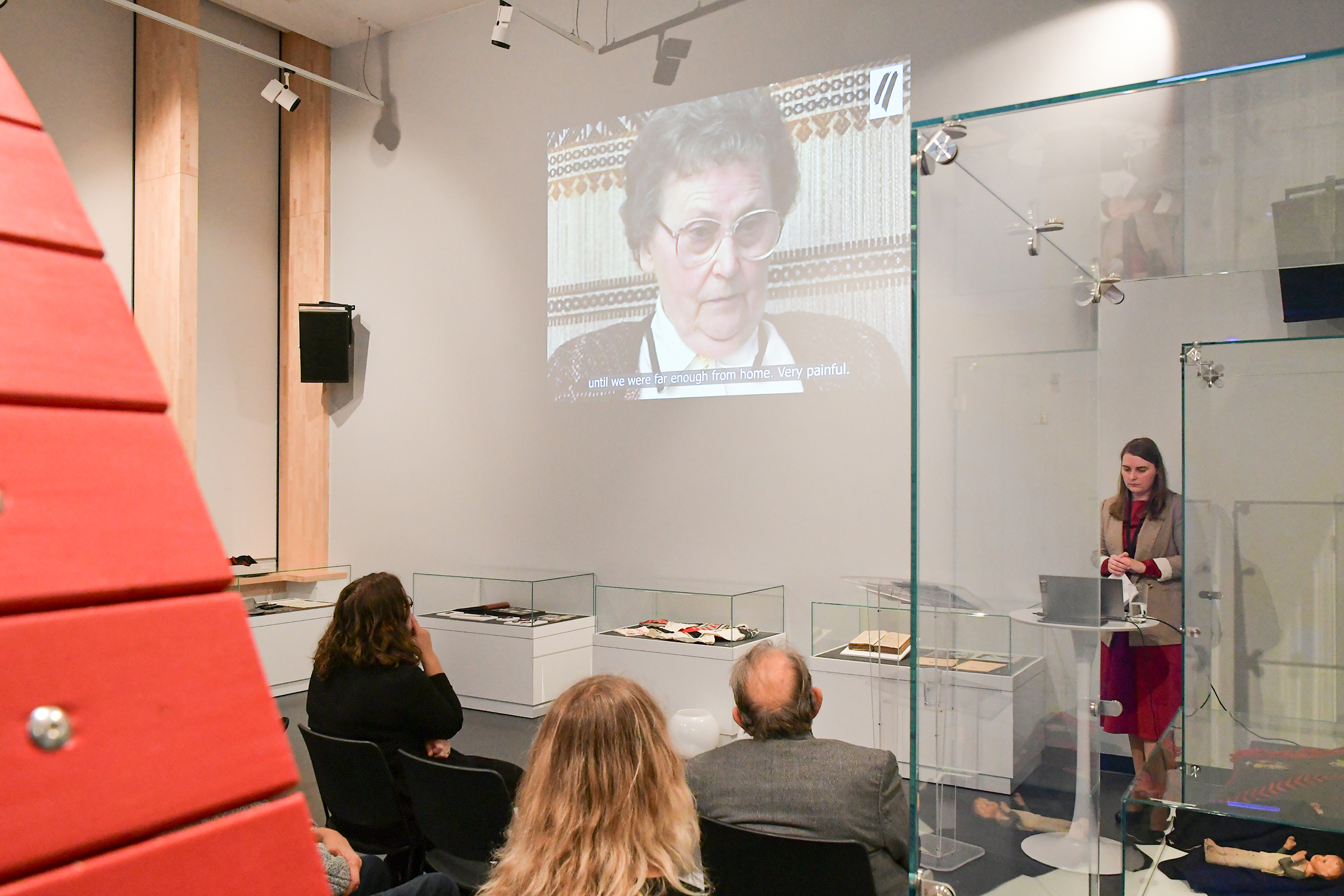
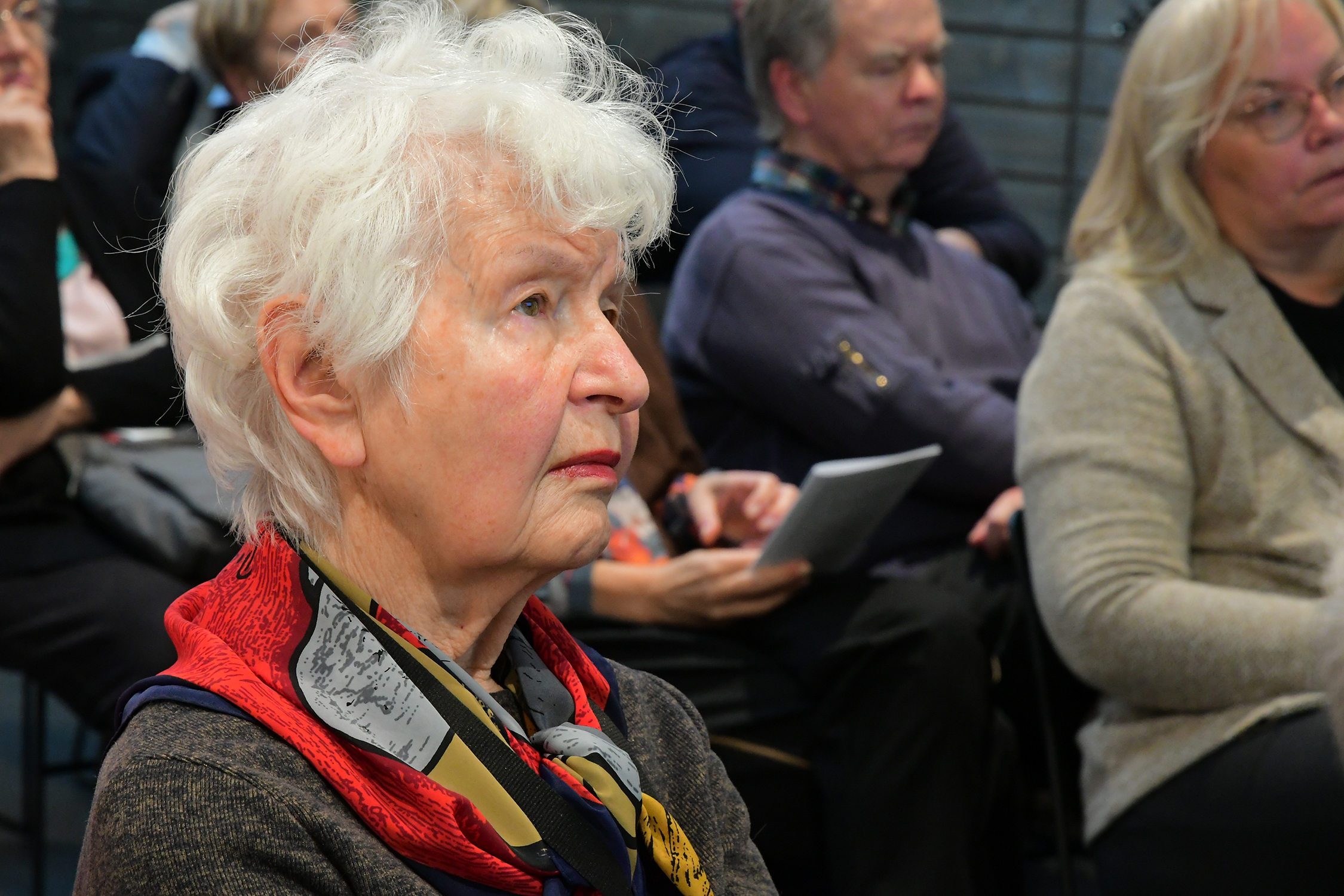

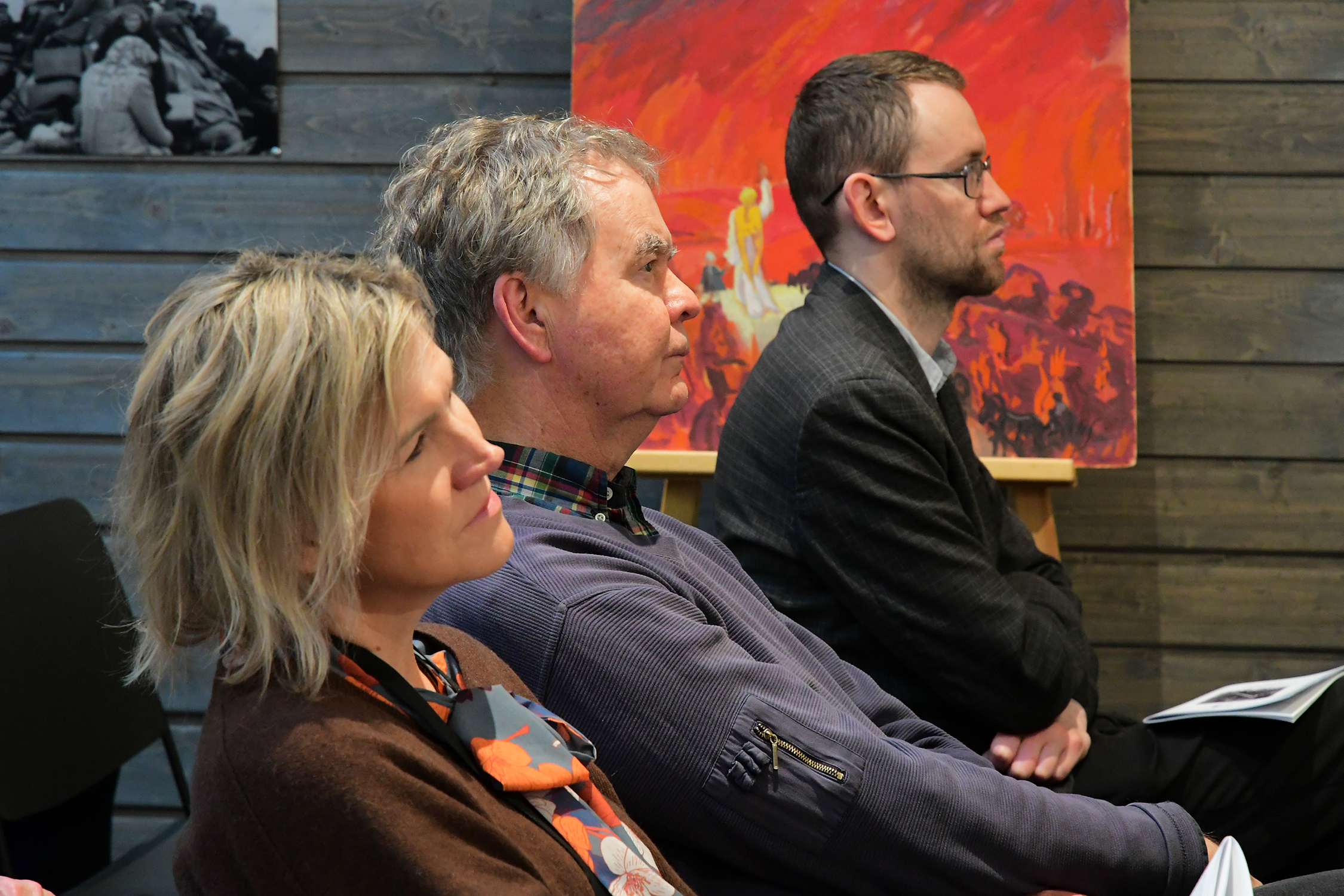
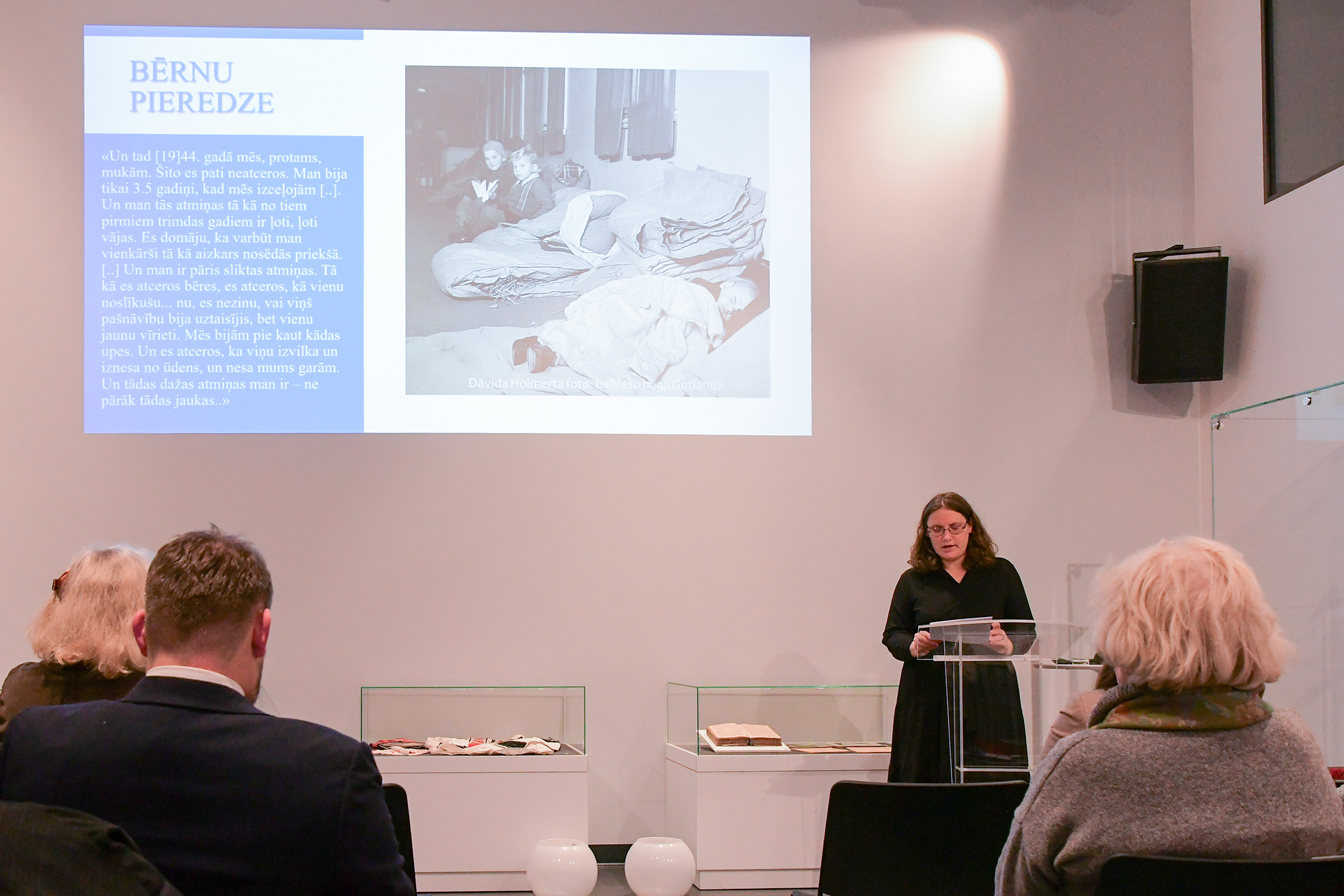
Maija Krūmiņa, PhD, senior researcher at the Institute of Philosophy and Sociology of the Faculty of Humanities of the University of Latvia, presented the life stories of refugees from the National Oral History Collection.
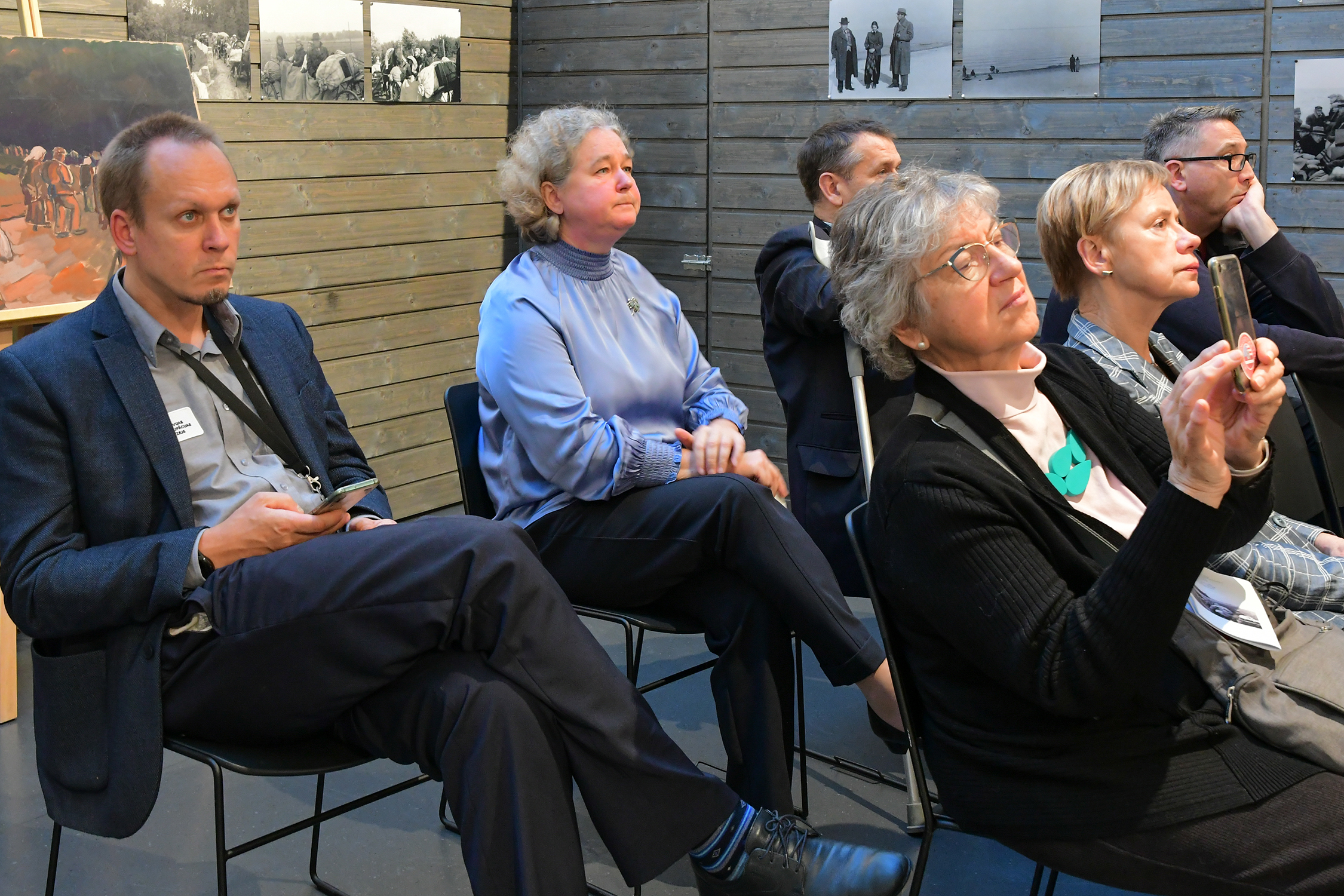

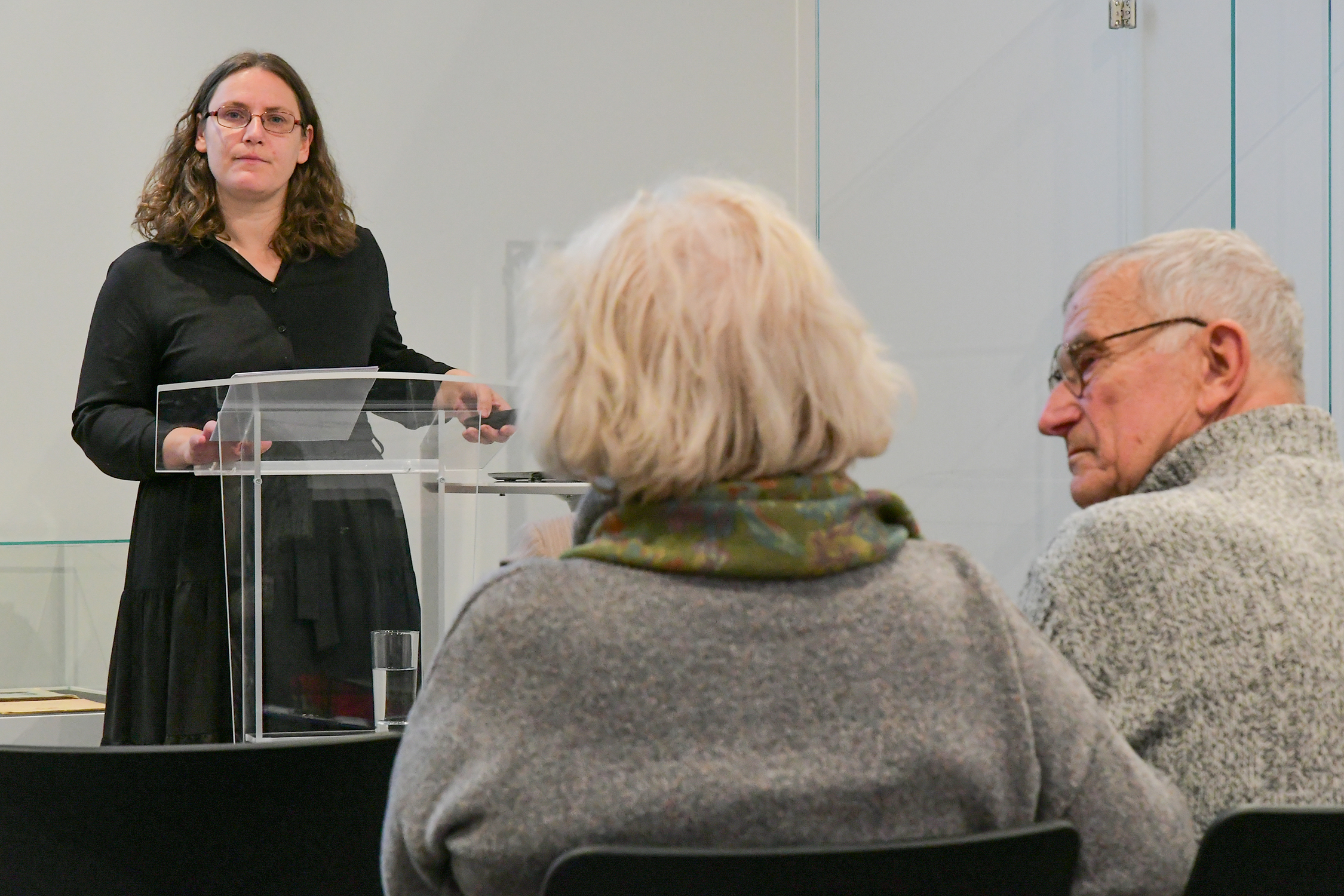
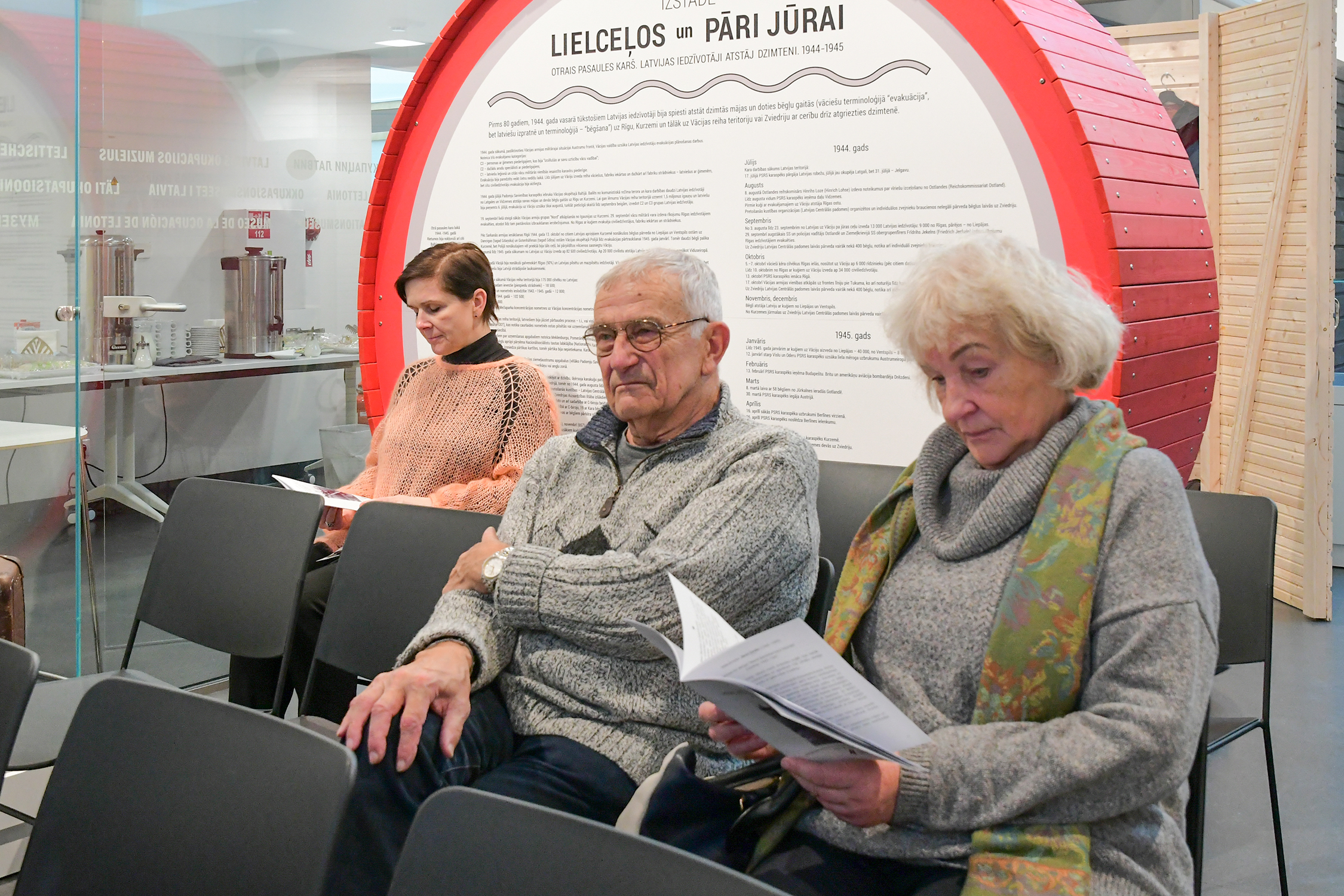

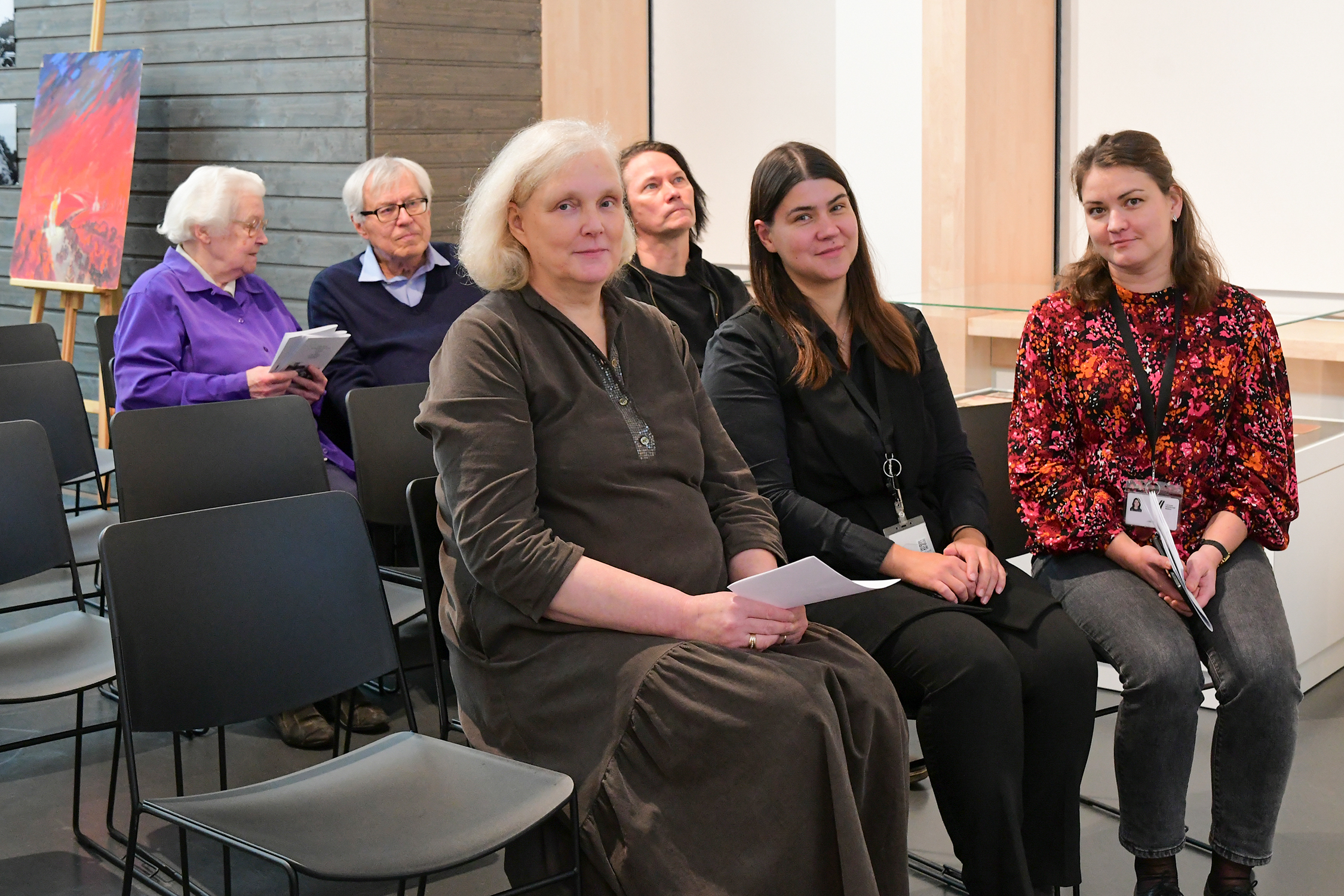
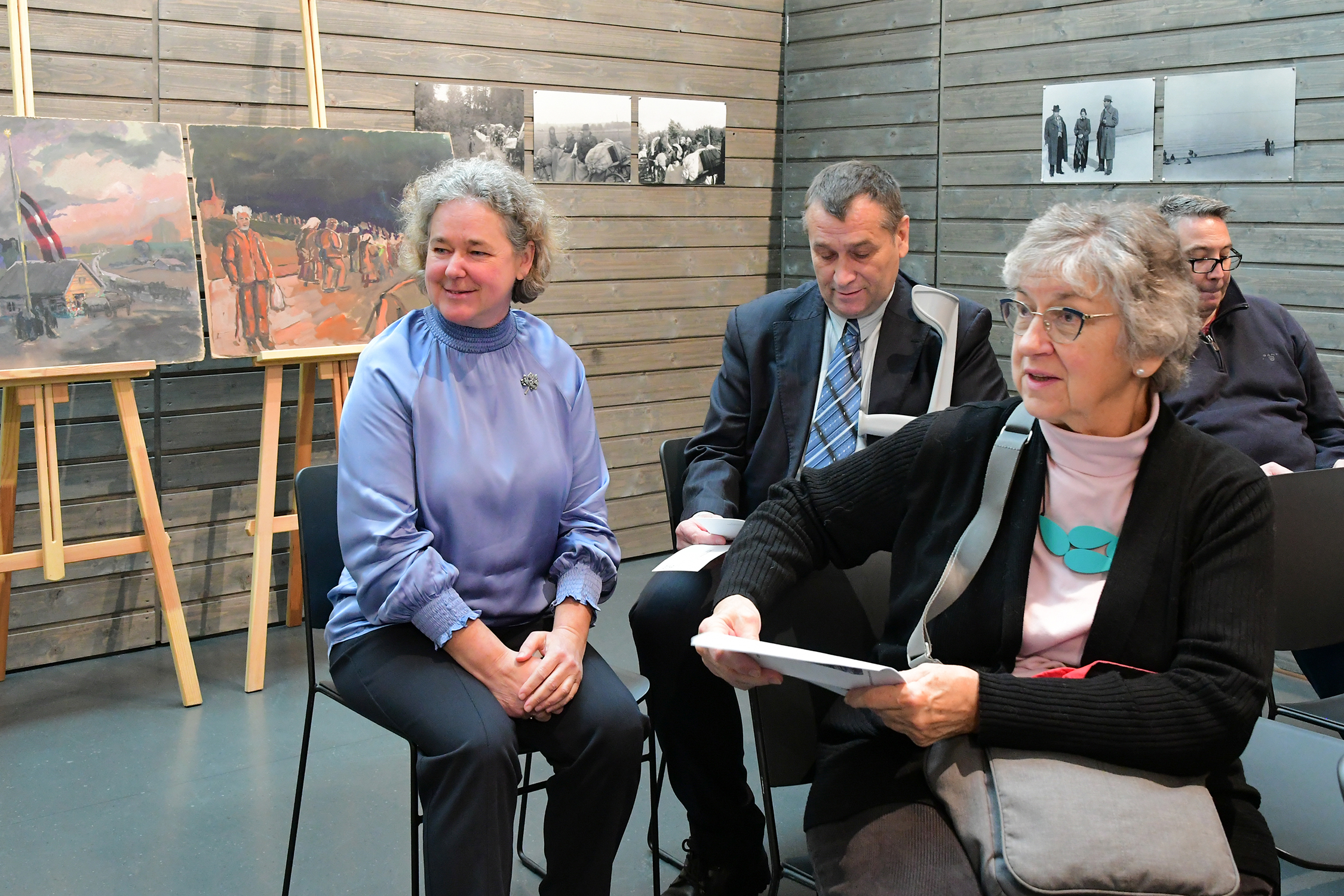
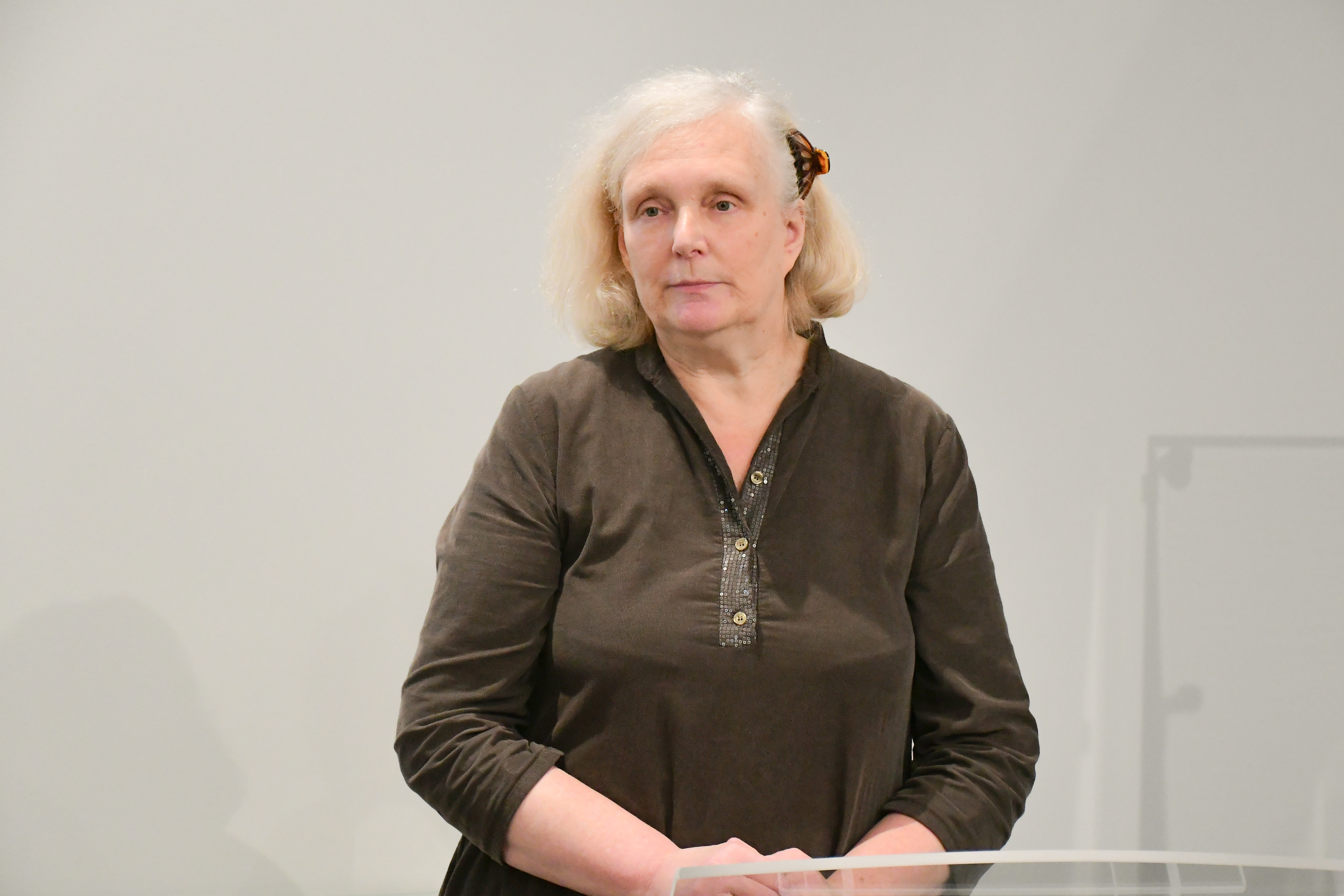
Deputy Director of the Museum, Taiga Kokneviča, introduced with the team behind making the exhibition "On the Highways and Across the Sea” Second World War. The Inhabitants of Latvia Leave their Homeland. 1944-1945".
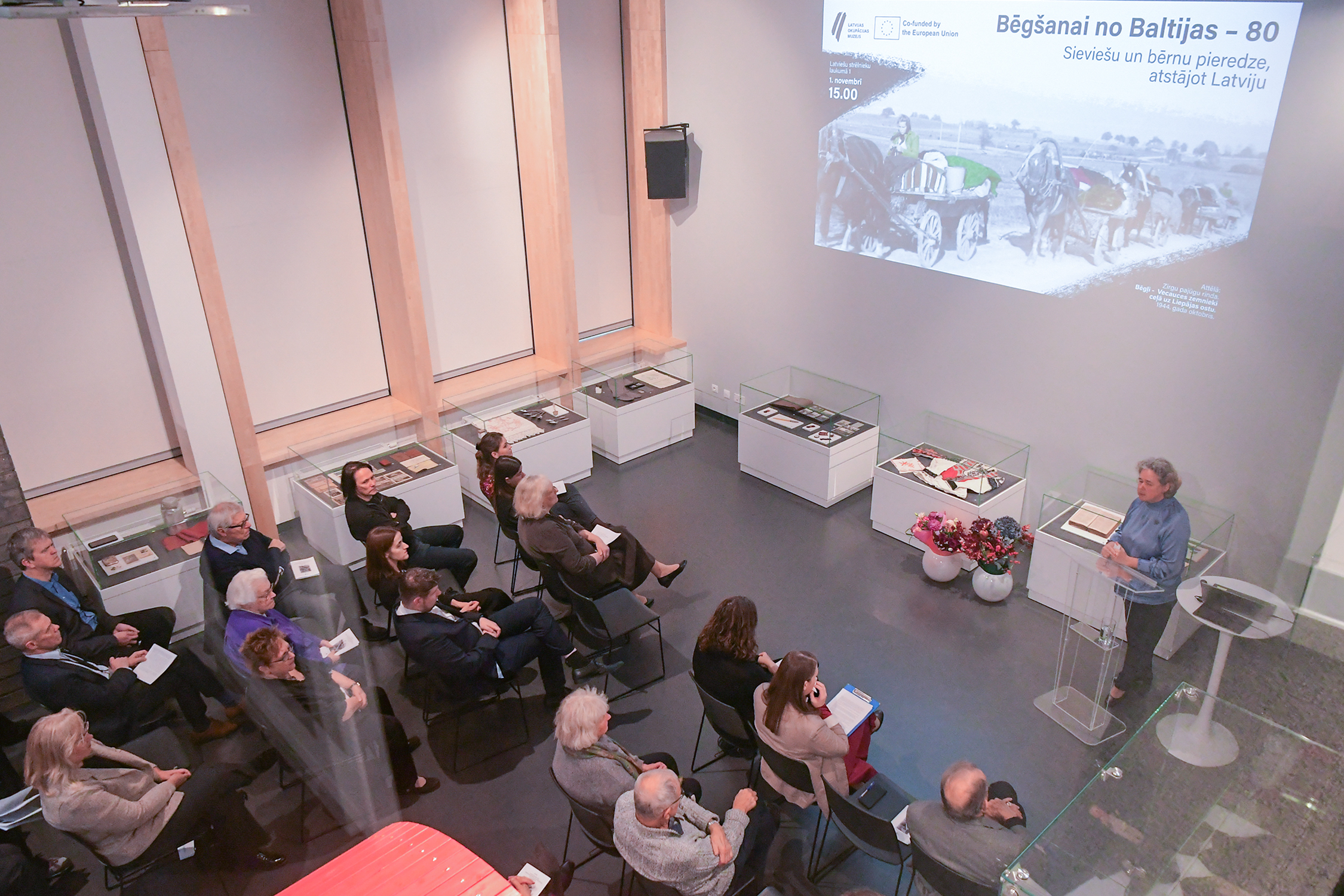
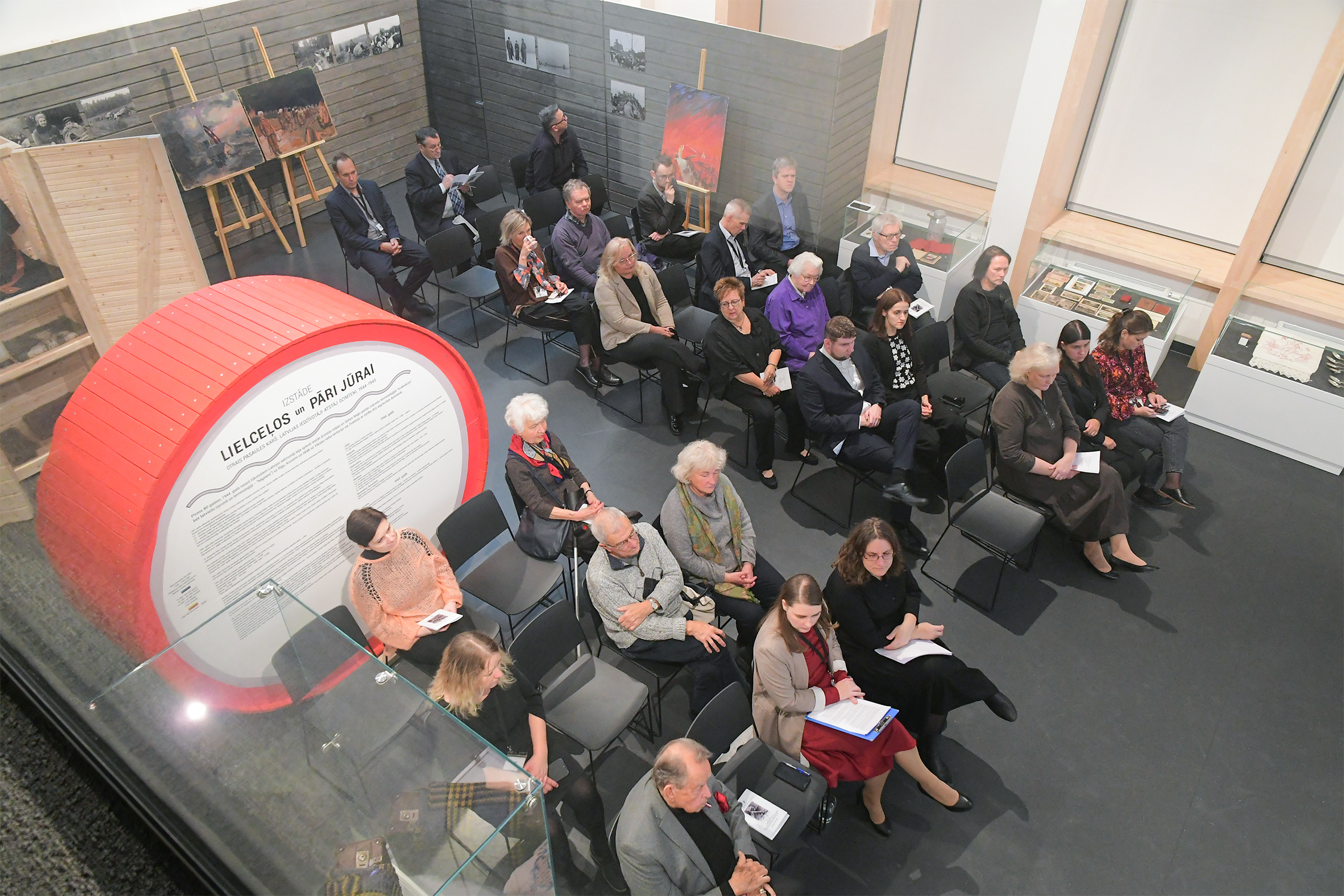
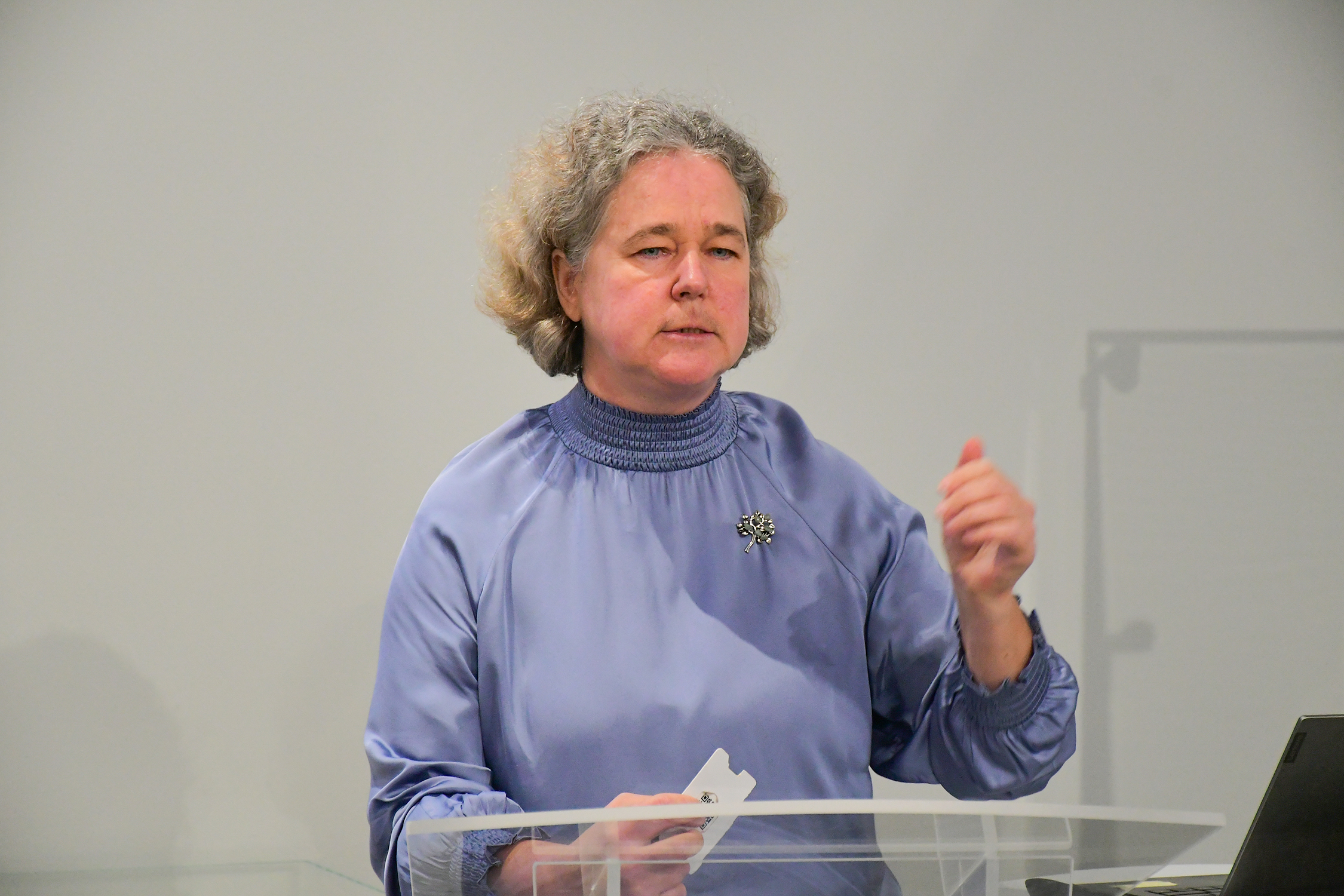
Creators of the exhibition – Aija Ventaskraste and...
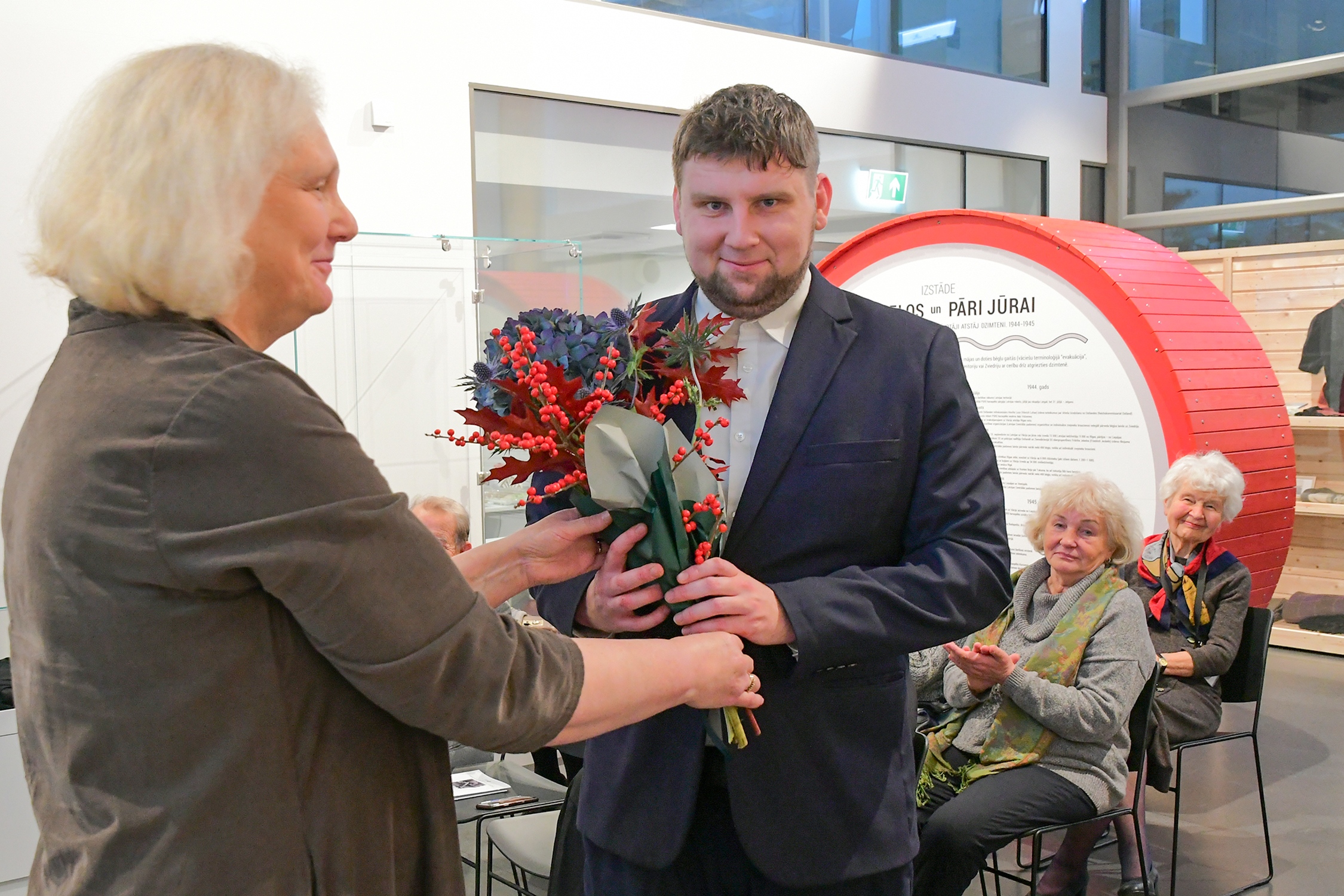
... Artūrs Romeiko.

English text from Gundega Michele.
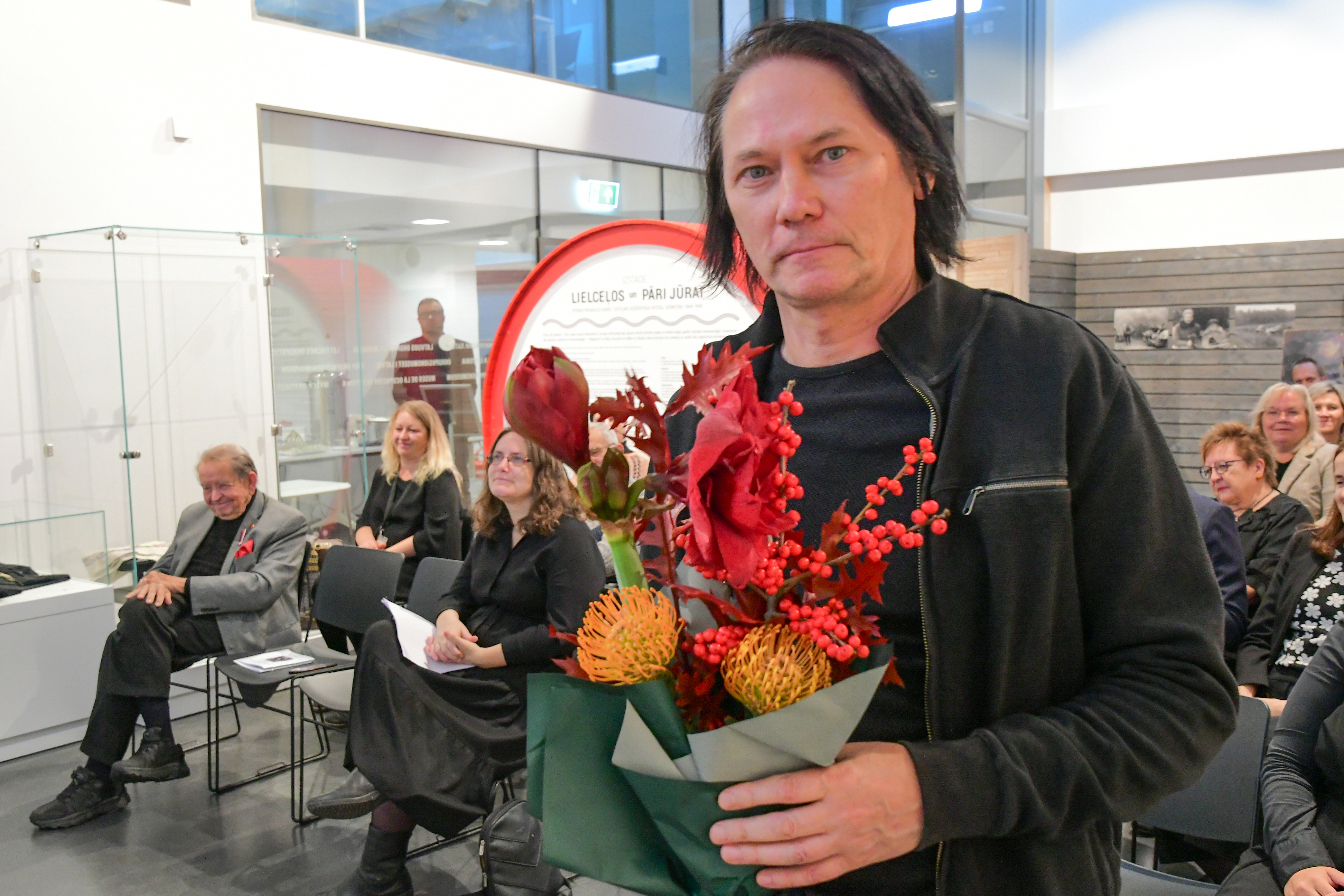
Designer, Egils Mednis.
